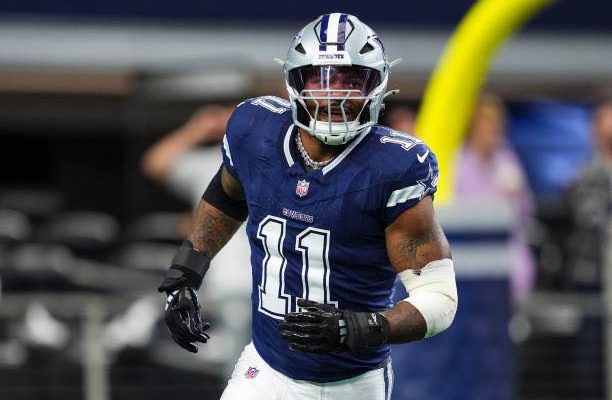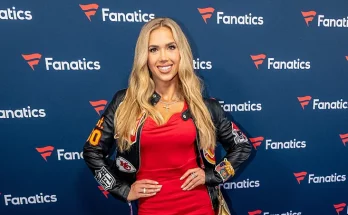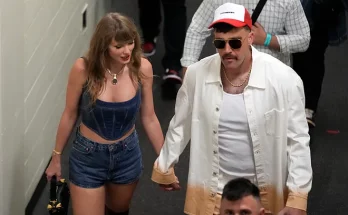The NFL landscape has shifted once again in seismic fashion as reports emerged that Dallas Cowboys star linebacker Micah Parsons has formally requested a trade. For Cowboys fans and NFL purists alike, the move is equal parts shocking and foreboding. Parsons, a generational talent and the face of Dallas’ defense, has arguably become the team’s most irreplaceable player since DeMarcus Ware or perhaps even all the way back to the glory days of Troy Aikman, Emmitt Smith, and Michael Irvin. His trade request is not merely a contractual or locker-room story—it is a thunderbolt that challenges the very identity of the Dallas Cowboys in 2025.
Just one year after being floated as a Defensive Player of the Year frontrunner and a perennial All-Pro force, Parsons now seems poised to leave the franchise that drafted him with the 12th overall pick in the 2021 NFL Draft. While no official comment has yet emerged from owner Jerry Jones or head coach Mike McCarthy, sources close to the situation suggest that this is not a negotiation tactic or an attempt to leverage more money. It’s a genuine separation request, and the implications are massive.
To assess what kind of return the Cowboys could receive in a trade, one only needs to glance back at a similar blockbuster from 2018. When Khalil Mack, then 27 and at the height of his powers, was traded from the Oakland Raiders to the Chicago Bears, the Raiders received a bounty: two first-round picks, a third-round pick, and a sixth-round pick in exchange for Mack, a second-round pick, and a conditional fifth-round pick. Mack was a former Defensive Player of the Year and had already posted three double-digit sack seasons in four years. His versatility, speed, and power made him a foundational piece for any franchise’s defense. Yet even then, he fetched two first-rounders and more.
Micah Parsons, at 26, offers something even more rare than Mack did at the time—consistent historic production at a younger age, coupled with positional versatility that few in NFL history have displayed. Parsons has racked up at least 12 sacks in each of his first four seasons, joining Reggie White as the only two players to ever achieve such a feat. And whereas Mack was primarily an edge rusher, Parsons can line up as a traditional linebacker, a stand-up edge rusher, or a hand-in-the-dirt defensive end. He drops into coverage, chases sideline to sideline, and erases opposing run games. His motor never stops, and his impact on the field stretches far beyond what even advanced statistics can encapsulate.
This isn’t just about trading a great player—it’s about trading a Hall of Fame trajectory player in his prime. The Cowboys, known for their splash and spectacle, now face the unenviable challenge of recalibrating both their defense and their brand. Parsons has been the soul of their defensive identity, and his jersey sales rival those of any quarterback in the league. He’s become a symbol for the franchise—hardworking, disruptive, tenacious—and letting him go will cause an identity vacuum.
What would it take for another team to land Parsons? If the Mack trade is a benchmark, then a Parsons deal may surpass it significantly. Given inflation in both player salaries and trade market valuations since 2018, it’s reasonable to assume the Cowboys will demand at least three first-round picks. Not conditional, not protected—full-fledged first-rounders from contending or rebuilding teams alike. In addition, a second or third-round pick would almost certainly be involved, and the Cowboys might even attempt to package Parsons with a late-round pick to maximize return. Teams may also try to include a high-ceiling young player in lieu of a third or fourth pick, but make no mistake: the asking price will be steep.
To put it in perspective, the Houston Texans received three first-round picks, a third-round pick, and a fourth-round pick from the Cleveland Browns in the Deshaun Watson trade—and that was for a quarterback with off-field legal distractions and having not played for a full season. Parsons, on the other hand, has remained clean off the field, represents one of the few marketable defensive stars in a league dominated by offense, and doesn’t appear to have any character red flags. He is a locker room leader, the ultimate competitor, and a player coaches dream of building a scheme around. The rarity of his talent combined with his consistent production could very well make him the most expensive defensive trade chip in modern NFL history.
There are only a few teams that could feasibly make a trade of this magnitude. The Chicago Bears, flush with draft capital after years of rebuilding, could theoretically make a run at Parsons, particularly if they believe they’re on the cusp of contending with Caleb Williams under center. The New York Jets, desperate to capitalize on what could be the final year or two of Aaron Rodgers’ career, may view Parsons as the defensive equivalent of their Super Bowl push. The Miami Dolphins, always willing to make splashy moves, have the kind of win-now roster that could entice them to give up significant future capital. Even a team like the Detroit Lions—who have cap flexibility and aspirations of finally reaching the Super Bowl—could mortgage a slice of their future to pair Parsons with Aidan Hutchinson in what would immediately become the most fearsome pass rush duo in the league.
The Cowboys, meanwhile, will be under immense pressure to maximize the return. Jerry Jones, never one to shy away from the spotlight, will face harsh scrutiny if the return isn’t viewed as franchise-altering. For all the talent Dallas has, their championship window has remained elusive, and Parsons was their clearest ticket toward defensive dominance. A bad trade could haunt the organization for years. But if Jones and the front office can spin the departure into a future-defining haul—perhaps involving multiple first-round picks and a blue-chip young defender or offensive lineman—they may survive the fallout.
However, replacing Parsons on the field will be far harder than acquiring picks. There simply aren’t many players like him. The 2026 NFL Draft will have its usual crop of edge rushers and linebackers, but no one is projected to offer the rare hybrid blend of speed, power, and instincts that Parsons does. Even with multiple high picks, the Cowboys may find themselves chasing shadows. There’s also the matter of his locker-room leadership. Younger defenders like DeMarvion Overshown, Mazi Smith, and DaRon Bland have credited Parsons with setting the tone during practices and film study. His absence will be more than schematic—it will be spiritual.
There’s also a broader league-wide conversation to be had here. For years, players demanding trades has been a trend in the NBA, but the NFL was slower to adopt such power shifts. But in recent seasons, stars like Jalen Ramsey, Tyreek Hill, and Davante Adams have made power moves. Now Parsons joins that list, and his decision may embolden other defensive players—especially those playing on rookie deals or those feeling undervalued—to seek exits earlier in their careers. The balance of power is slowly shifting, and the era of player empowerment in the NFL is quietly gaining steam.
There’s a chance, of course, that the Cowboys could try to repair the relationship. The franchise still holds contractual rights, and until a deal is finalized, there remains room for mediation. But insiders suggest that Parsons’ decision is rooted not in financial disagreement, but in a desire for a new start—possibly with a team more immediately positioned to win a Super Bowl. If that’s the case, then damage control will be focused on legacy, narrative, and perception—not necessarily negotiation.
For now, the league waits. Front offices are surely assembling war rooms and dialing agents, gauging interest and calculating cap hits. Coaches are sketching out hypothetical playbooks that feature #11 anchoring their front sevens. Fans are wondering how their teams could shift into championship mode overnight with the addition of one man. And the Cowboys? They’re left to face the harsh reality that sometimes, no matter how transcendent the talent, things fall apart.
Micah Parsons will leave a massive void in Dallas. His departure will represent more than just the exit of a defensive stalwart—it will be the dissolution of a hope, the end of an era, and the start of a new and uncertain chapter in Cowboys history. The trade, when and if it comes, will be scrutinized more than any other in recent memory. Because when you trade away a unicorn, you’d better get back a small herd of thoroughbreds—or live with the regret forever.



